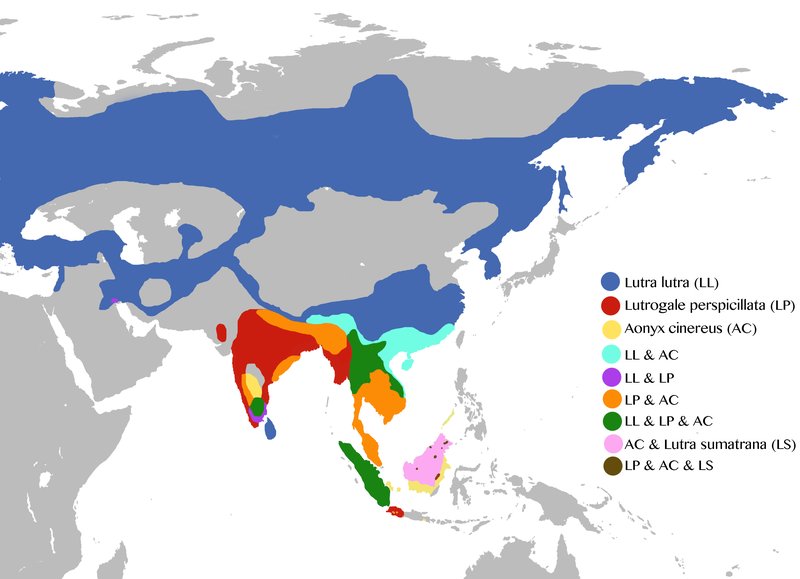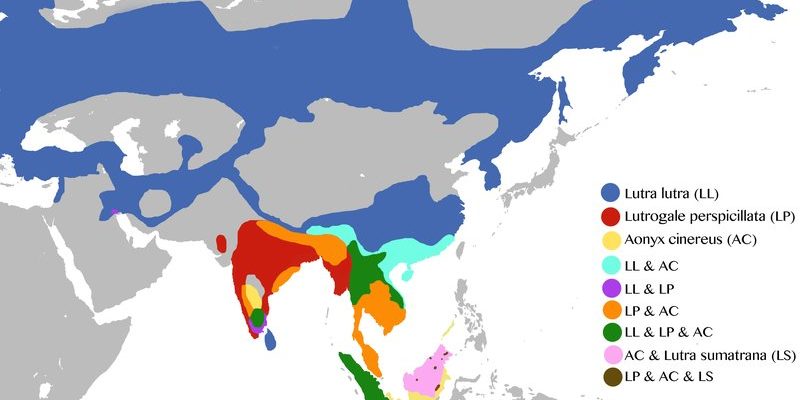
Giant otters, which can reach up to six feet long, aren’t just cute and cuddly. They’re a crucial part of their ecosystem, helping to maintain the balance in freshwater habitats. So, if you’re wondering where you can find these incredible animals in the wild, let’s take a closer look at their habitat and distribution.
The Preferred Habitat of Giant Otters
Giant otters are most commonly found in freshwater habitats, primarily in rivers, lakes, and swamps. They thrive in areas with plenty of vegetation, which provides shelter and food. These otters prefer clear waters with abundant fish and crustaceans since they are excellent hunters and need to eat a lot!
Honestly, think about it like this: if you were a giant otter, you’d want a place that’s not only rich in resources but also offers some privacy, right? That’s why they’re often spotted in areas with dense riverside forests or grasslands. These spots help them catch their dinner while keeping safe from predators.
Water Quality Matters
The quality of water is crucial for giant otters. They prefer clean waters that are well-oxygenated, with a good variety of fish. Polluted or stagnant waters won’t do the trick for these social animals. They’re highly sensitive to changes in their environment. If their home isn’t healthy, it can directly affect their population and overall wellbeing. So, clean rivers and lakes are at the heart of their habitat needs.
Geographical Distribution of Giant Otters
You might be wondering where in the world these creatures roam. Giant otters are native to South America, specifically in countries like Brazil, Peru, Colombia, and Venezuela. They make their homes in the Amazon River Basin, a true oasis of biodiversity. The lush rainforests surrounding these rivers provide not just homes but also a rich hunting ground.
Amazon Rainforest: The Heart of Giant Otter Territory
The Amazon Rainforest is essentially the heart of the giant otter’s territory. Imagine this vast jungle, filled with towering trees, winding rivers, and a plethora of wildlife. It’s here that they find everything they need to survive and thrive.
Giant otters often rely on specific parts of the river—those that are calm and have plenty of fish. They can also be found in oxbow lakes and lagoons, which are like natural fish farms created by the movement of river water. These areas are essential for their feeding and breeding success.
Social Structure and Territory
Giant otters are social creatures that live in family groups, typically consisting of a few adults and their young. Each family usually claims a specific stretch of river as their territory. They’re not too keen on sharing, which makes sense for their survival.
Here’s the thing: they communicate with each other through a series of vocalizations, including chirps and growls. This helps them establish boundaries and warn others to steer clear. It’s like having a friendly neighborhood watch system, but in the animal kingdom!
Defending Their Territory
When it comes to defending their area, giant otters can be quite fierce. They are known to chase away intruders, including rival otters or even caimans (a type of crocodilian). This territorial behavior ensures they have enough food and space for their young. It’s a tough world out there, and they have to look out for their family!
Impact of Habitat Loss
Unfortunately, giant otters face significant threats due to habitat loss. Deforestation, pollution, and illegal fishing practices are some of the major issues affecting their populations. As their natural habitats are destroyed, they find it increasingly challenging to survive.
Picture a beautiful river slowly choking on plastic waste and chemicals. It’s not just about the pollution itself; it’s also about the loss of food sources. As pollution increases, fish populations can diminish. This creates a ripple effect that impacts giant otters and other wildlife, making it crucial to protect their habitats.
Conservation Efforts
Fortunately, there are efforts underway to protect giant otters and their habitats. Various organizations work to raise awareness about the importance of conservation. Many countries have established protected areas to ensure these animals have a safe space to live, hunt, and raise their young.
You might also find local communities engaged in conservation practices, focusing on sustainable fishing and cleaning up rivers. It’s a collective effort—a reminder that everyone can play a role in protecting these incredible creatures.
The Role of Giant Otters in Their Ecosystem
Giant otters are not just adorable faces; they’re vital to their ecosystems. As top predators, they help control fish populations, ensuring that no single species dominates the waterways. Their presence indicates a healthy ecosystem, making them essential for environmental balance.
It’s like having a good balance in a friendship—you need to give and take for it to thrive. So, when you see a giant otter in the wild, know that they’re doing their part to keep the environment thriving.
Where to Spot Giant Otters in the Wild
If you’re feeling adventurous and want to see giant otters for yourself, there are places in South America where you can do just that! Look for eco-tours in areas like the Amazon Basin or the Pantanal wetlands, where you might catch a glimpse of these playful creatures.
Many tour operators offer guided trips focused on wildlife observation, giving you the chance to see giant otters in their natural habitat. Just remember to be respectful of their space. After all, you’re a visitor in their world!
In conclusion, understanding where giant otters live helps us appreciate these unique creatures. From their preferred habitats in the Amazon to their role in the ecosystem, it’s clear that protecting their environment is crucial. The next time you think of giant otters, remember the vibrant rivers and lush forests that support them. By working together, we can ensure they continue to thrive in the wild.

